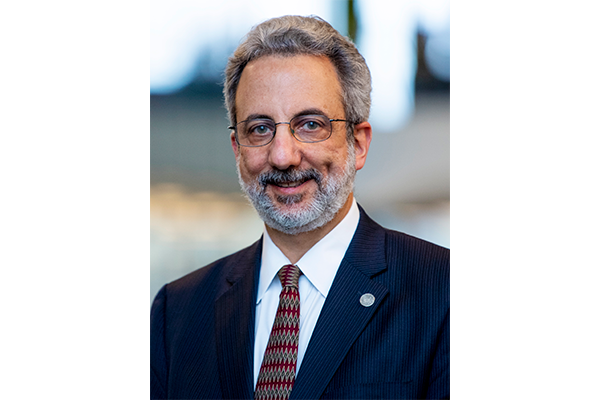In ARPA-E Project, CEE faculty Push Frontier of Sustainable Structural Engineering

An ongoing multi-institutional research project led by CEE University Distinguished and CDM Smith Professor Jerry Hajjar and funded by the Department of Energy’s Advanced Research Projects Agency- Energy (ARPA-E) is laying the groundwork at the forefront of structural engineering. The grant, titled “4C2B: Century-Scale Carbon-Sequestration in Cross-Laminated Timber Composite Bolted-Steel Buildings,” remains underway, but is already bearing fruit in the development of a new system for building design and construction, with multiple papers published with findings from the promising research.
The construction industry is one of the planet’s leading sources of carbon emissions, and the extensive use of steel and concrete in current construction best practices bring with them challenges related to costs, energy usage, pollution, and eventual decommissioning. The grant explores the combination of two novel ideas, Design for Deconstruction (DfD) and integration of Cross-Laminated Timber (CLT) into steel building structures. “DfD is a design framework that enables engineers to choose structural systems and detail structures to facilitate disassembly of the structure at the end of its useful life cycle while maintaining ability to reuse the structural components in other projects,” explained Hajjar. “Additionally, cross-laminated timber is a building material that provides the opportunity to integrate a material into steel structures that offers the potential for incorporating carbon sequestration.” By developing DfD strategies for steel-CLT structural systems, the researchers believe they can launch a new system for sustainable structural design. The system includes a novel connector of the CLT floor diaphragms to the steel floor framing that enables construction strictly from the top of the floor system and incorporates composite behavior between the CLT diaphragm and the steel floor beams to enable smaller member sizes and a lighter building throughout the structure.
A few years in, the grant is already showing promising output, with the publication of various conference papers and presentations, and global interest. Three papers, led by researchers CAMD Affiliated Faculty Michelle Laboy of Northeastern University and Fiona O’Donnell of Swarthmore College, were published in Structures and Architecture as conference proceedings of ICSA 2025 in Belgium. In Laboy’s “Prototypes in collaboration: Practice-based research and research-based practice,” joined by Hajjar, Professor Matthew Eckelman, and SGH industry partners, the team lays out methodologies for “academics and practitioners to engage in collaborative research and explains how the process can result in more useful outputs that reduce uncertainty in the design and construction industry to accelerate its transformation.” They also published “Carbon reduction strategies with steel-CLT hybrid structures,” which documents design strategies for the combination of DfD and CLT, as well as a life cycle assessment between the new design strategies and existing steel-concrete construction methods. O’Donnell’s “U.S. perspectives on deconstruction and reuse of structural wood products,” written with MIE/CEE Professor John Lesko and collaborators, provides a framework for the adoption of DfD in the US and the existing barriers to that goal. Led by Hajjar and joined by CEE Associate Professor Michael Kane, Baiyu Chen, PhD’27, and collaborators, the paper “Cyclic Behaviour of Composite Steel-Cross-Laminated-Timber Structural System,” was presented at the World Conference on Timber Engineering 2025 in Australia and investigates the use of DfD+CLT in seismic zones.
The research developed through the ongoing academic, industry, and government collaboration in the ARPA-E grant has yielded promising results for the viability of steel-timber composite buildings. Through this partnership, the researchers are pushing the frontiers of sustainability and structural engineering, with promising potential to transform the industry.